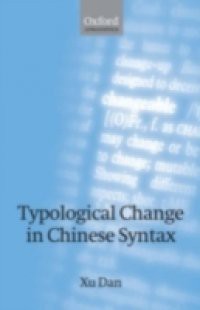| | | Typological Change in Chinese Syntax | Language of a book: Английский Language of an original book: Английский Publisher: Gardners Books | |
|
| | This new interpretation of the early history of Chinese argues that Old Chinese was typologically a 'mixed' language. It shows that, though its dominant word order was subject-verb-object, this coexisted with subject-object-verb. Professor Xu demonstrates that Old Chinese was not the analytic language it has usually been assumed to be, and that it employed morphological and lexical devices as well as syntactic means. She describes the typological changes that havetaken place since the Han period and shows how Chinese evolved into a more analytic language, supporting her exposition with abundant examples. She draws where possible on archaeological findings in order to distinguish between versions of texts transmitted and sometimes modified through the hands ofgenerations of copyists. The author focusses on syntactic issues, including word order, verbs, causative structures, resultative compounds, and negation, but also pays close attention to what she demonstrates are closely related changes in phonology and the writing system. The book will interest scholars and graduate students of Chinese linguistics, philology, classical literature as well as general linguists interested in word-order typology and language universals. It may be also be used as a text for advanced courses in Classical Chinese and Chinese diachronic syntax. | | Поделиться: | ]]> :0]]> ]]> :0]]> ]]> :]]> ]]> :]]> ]]> :0]]> ]]> :0]]> ]]> :0]]> ]]> :0]]> ]]> :0]]> ]]> :0]]> ]]> :0]]> :0]]>  :0 ]]> :0 ]]> :0]]> :0]]> | | Мой статус книги: | | |
|
{"b":"317617","o":30} |

